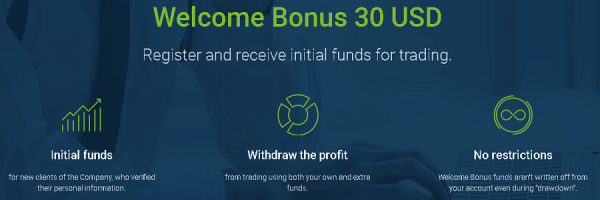How to build an anti-crisis investment portfolio
The number of private investors in international markets is growing every year. And it's not surprising given the ongoing rally in the US stock market, surging gold prices and bitcoin growth.
However, we should not expect this growth to last forever because all markets face a crisis at some point. That's why it's so important to build a sustainable investment portfolio.
What is an investment portfolio?
An investment portfolio is a set of financial assets aimed at increasing the investor's return. Naturally, the portfolio must minimize exposure to risk and uncertainties, so you need to choose your assets carefully. Popular instruments include stocks, bonds, precious metals, currencies, futures, options, real estate, etc.
Typically, the assets are selected depending on the purpose of investment. So, if we are talking about capital protection, then you should avoid risky instruments and fill your portfolio with low-risk assets.
Savings and crisis
The crisis causes economic instability. People are afraid to burn through their savings. The main problem here is inflation, which nibbles away at your money. Inflation decreases the purchasing power of money, which means that your money may become less valuable or useful over time i.e., you can buy fewer goods or services. Inflation may rise due to the following factors:
· Enlarged fiscal deficits;
· Decrease in production volumes;
· Growing government debt.
Inflation can grow at different rates. Based on the pace, inflation is classified into moderate (less than 10% a year), galloping (from 10% to 200% a year) and hyperinflation (greater than 200% a year). In order to protect your savings in the face of inflation, it is reasonable to invest in assets that can "survive the crisis." The return on the selected assets must be higher than the inflation rate.
At the same time, we should also consider such a factor as depreciation, which occurs when the currency of one country becomes cheaper in relation to another country's currency. In this regard, the so-called hard or safe-haven currencies should become your choice in a crisis. These include the US dollar, euro and pound sterling. Below we will give an example of several assets to hedge against inflation.
Safe haven assets
Safe haven assets allow you to protect your investments in economic downturns. They are more stable and less volatile as their goal is not to make money but to preserve it, so they generally outperform riskier investments during stock market crashes. That is why building an anti-crisis portfolio, you need to pay attention to safe-haven assets. These include:
· Bonds;
· Gold;
· Derivatives;
· Stocks of some companies (retailers, energy sector, producers of essential goods and drug manufacturers);
· Real estate (REIT).
Building an anti-crisis portfolio
When it comes to capital preservation and building a low-risk portfolio, you need to understand that there is no universal recipe. Any market can collapse, be it the real estate market (subprime mortgage crisis of 2007), stock market crash (1929 Great Depression, Black Monday of 1987, the 2001 dotcom bubble burst, the 2008 financial crisis, and the 2020 COVID-19 pandemic crash) and so on. Considering that it is almost impossible to predict what will trigger the next market crash, the only solution may be to diversify your portfolio by investing in lower risk securities and allocating just a small portion of your portfolio to high-risk assets. By picking assets of different risk profiles, you make your portfolio more diverse, reducing the total risk from each individual asset.
The riskiest assets are stocks, options and futures, while the conservative ones include bonds, real estate and gold. There are certain portfolios built based on asset allocation strategies. They are referred to as model portfolios. Here are some of them.
The classic anti-crisis portfolio model may include such assets as:
- Shares (25%);
- Cash and short-term bonds (25%);
- Long-term bonds (25%);
- Gold (25%);
Such a proportion of assets is optimal and can withstand almost any crisis. Ray Dalio's portfolio is another attractive portfolio setup in terms of investment preservation, dubbed "All weather." Here's his breakdown of what a well-diversified portfolio might look like:
- US stocks (30%);
- Medium-term US bonds (15%);
- Long-term US bonds (40%);
- Gold (7.5%);
- Other commodities (7.5%);
Despite the difference in composition, the profitability of the first and second portfolios in 2007 turned out to be approximately the same: 6.72% and 6.75%, respectively.
As practice shows, adding REIT shares to a classic portfolio can increase its stability. This will slightly increase volatility, but the risk will increase only slightly. At the same time, these portfolios demonstrate a significant increase in return. Other types of portfolios are not as effective, so we recommend that novice investors opt for a classic portfolio composition.
Thus, in order to protect your investments during a crisis, it is recommended to use a classic anti-crisis portfolio, and if you want to earn a little more, add real estate (REIT) to it.
How to reduce portfolio risk
A crisis is always associated with losses and it is almost impossible to avoid them. However, it's still possible to minimize risk by distributing the assets in your portfolio as follows: 50% should be allocated to bonds, 25% to stocks, and another 25% to safe-haven assets such as gold.
It should also be noted that a higher percentage of low-risk assets in a portfolio has a lower potential for profit in the long run. At the same time, some crises may negatively impact some of the safe-haven assets. Novice investors can choose one of the suggested anti-crisis portfolio models. Government bonds (for example, US Treasury bonds) are considered to be the world's safest investment and store of value, especially during periods of economic turmoil, since they are issued by the state itself, and non-payment of income on such bonds is possible only in case of default.
If you can't build a portfolio yourself, you can tap into the knowledge of professional traders by copying their trades. Many brokers, for example, AMarkets, have their own copy trading services. All you need to do is open an investment account, choose a trader with the most profitable strategy and he will do the rest of the work. Trades are copied to investment accounts automatically, so you don't need to have any trading experience to make a profit.
As can be seen, the anti-crisis portfolio can help you avoid the impact of negative market conditions on your savings. To build your own portfolio, you can either use ready-made models or select assets yourself while keeping in mind their risk profile.



